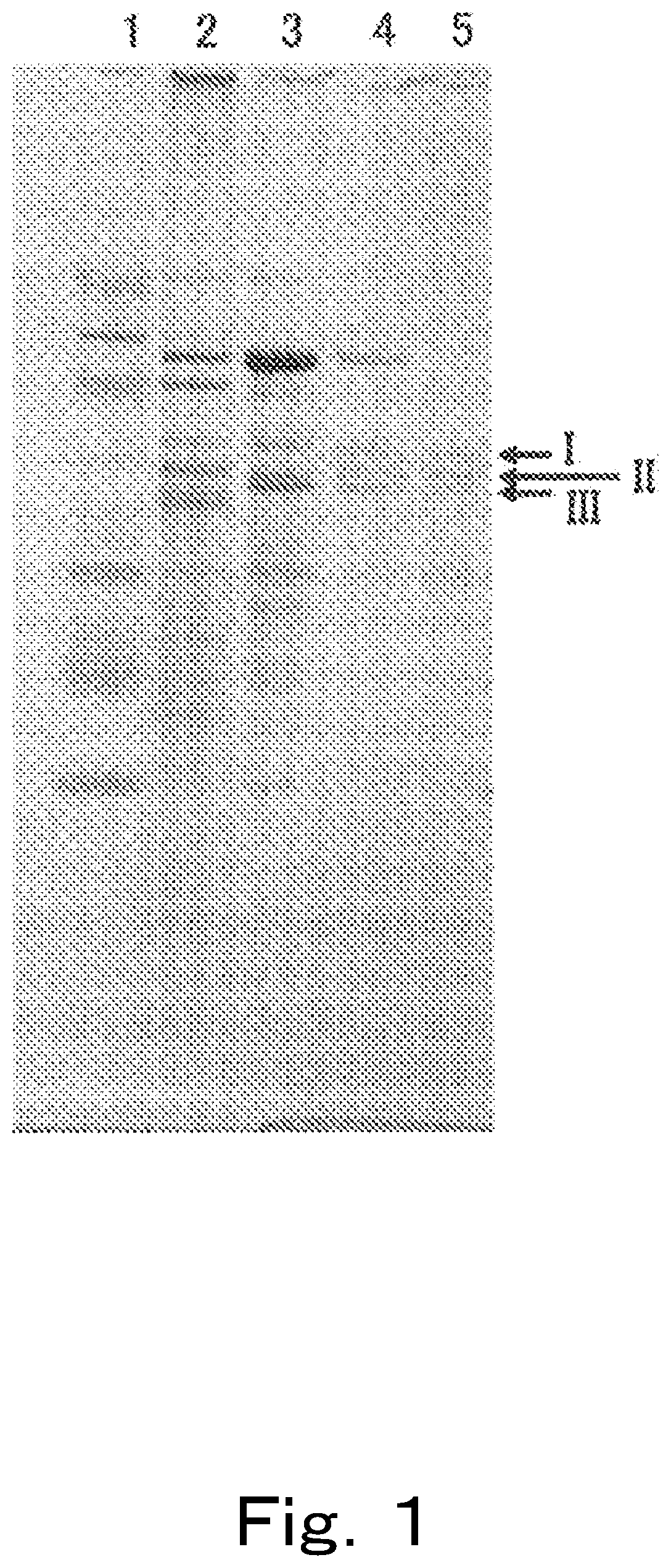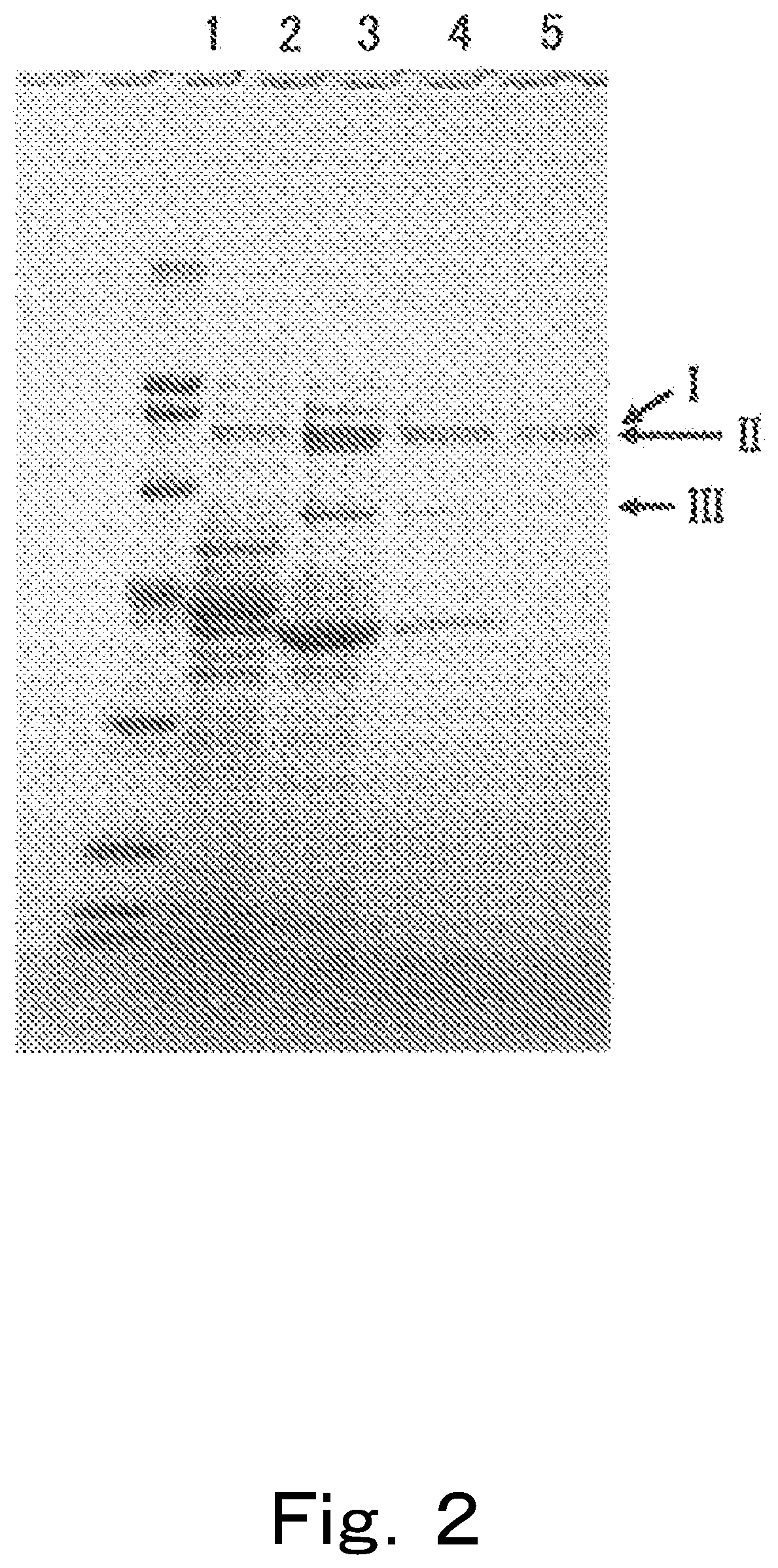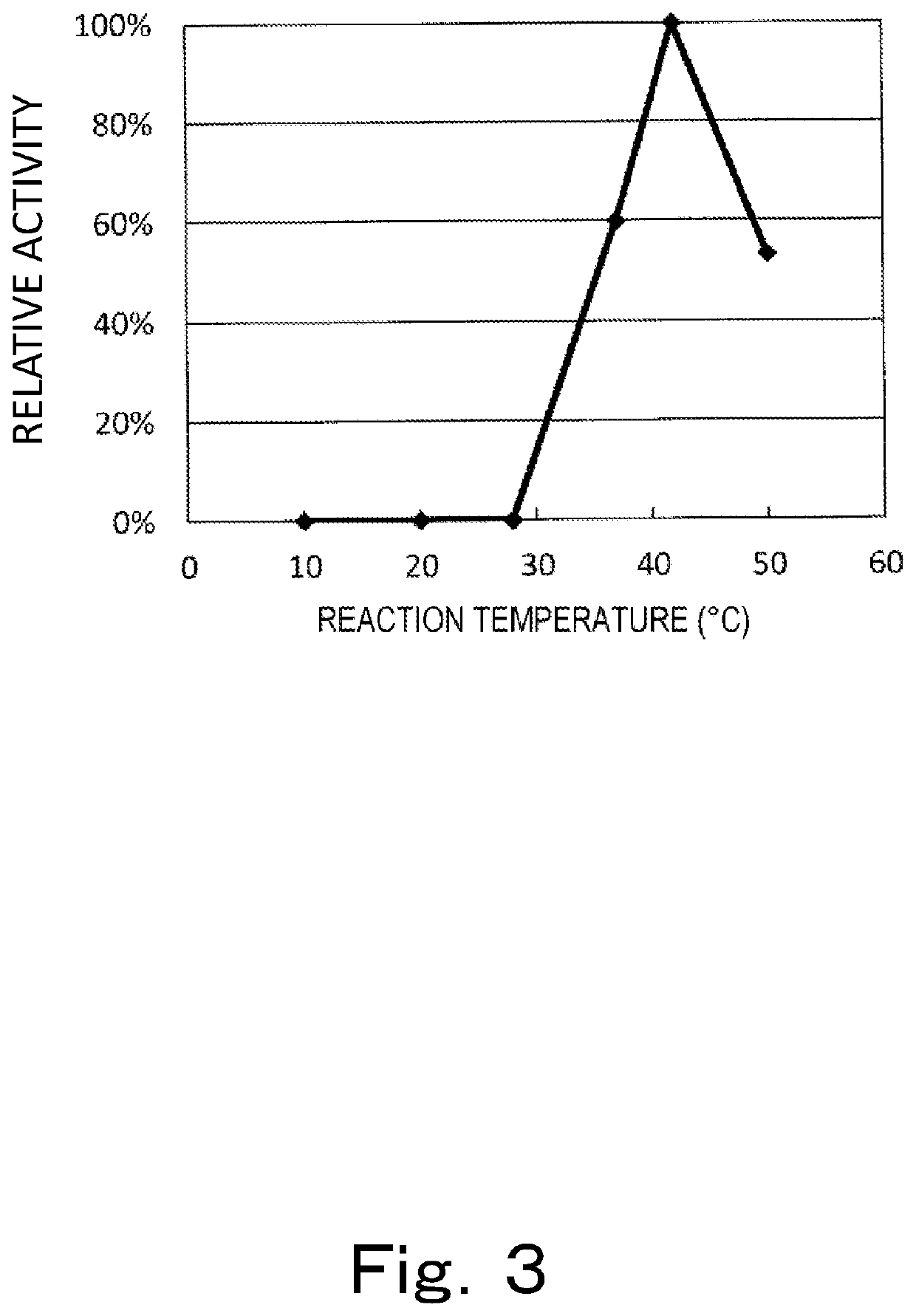Enzyme capable of dehydroxylating hydroxyl group in urolithin compound
a technology of urolithin and urolithin compound, which is applied in the field of enzymes, can solve the problems that the chemical synthesis of urolithins is not suitable for use in functional food products involving urolithins
- Summary
- Abstract
- Description
- Claims
- Application Information
AI Technical Summary
Benefits of technology
Problems solved by technology
Method used
Image
Examples
experimental example 1
al Cells for Proteome Analysis
[0552]A 10 mL ABB culture medium (ANAEROBE BASAL BROTH, Oxoid Limited, Code CM0957) containing 0.1% of ellagic acid (Sigma-Aldrich Corporation) and a 10 mL ABB culture medium (ANAEROBE BASAL BROTH, Oxoid Limited, Code CM0957) not containing the ellagic acid were both inoculated with the Gordonibacter urolithinfaciens DSM 27213 strain, and then cultured for 16 days at 37° C. in an anaerobic gas (N2 / H2 / CO2=80:10:10) environment.
[0553]The culturing solutions were centrifuged to collect bacterial cells, and the bacterial cells were then used in proteome analysis.
experimental example 2
[0554]The bacterial cells prepared in Experimental Example 1 were lysed using a lysate (7 M urea, 2 M thiourea, 2% CHAPS (3-[(3-cholamidopropyl)dimethylammonio]propanesulfonate), 10 mM DTT (dithiothreitol), and 50 mM tris-hydrochloric acid buffer (pH 7.0)), and were then subjected to proteome analysis through the method described in AMB Express, 2:37 (2012).
[0555]As a result, in comparison to the case in which culturing was implemented with the culture medium not containing ellagic acid, in the case in which culturing was implemented with a culture medium containing ellagic acid, proteins with significantly increased expression, that is, proteins for which expression was induced by the ellagic acid, were detected. The proteins were then analyzed on the basis of genomic information, and CD2938, CD2940, CD2941, CD2942 and CD2943, as well as CD2949, CD2950 and CD2952 were identified. GENETYX (Genetyx Corporation) was used was for analysis of gene information such as homology analysis.
experimental example 3
ction
[0556]The functions of the amino acid sequences of CD2938, CD2940, CD2941, CD2942 and CD2943 were predicted through a homology search with known proteins. The results were as follows.
[0557]CD2938 was presumed to be “anaerobic dehydrogenase having Se-Cys (selenocysteine) and Mo (molybdenum)-pterin bonding regions”.
[0558]CD2940 was presumed to be a “hydrogenase component having an Fe—S (iron-sulfur) cluster”.
[0559]CD2941 exhibited homology with “cations and various drug delivery pumps”.
[0560]It is presumed that these CD2938, CD2940, and CD2941 may be sub-units that constitute an enzyme that dehydroxylates the hydroxyl group at the 4-position of urolithins. These genes were named GuuroA1, GuuroA2, and GuuroA3. In addition, these genes are genes encoding for GuUroA1, GuUroA2, and GuUroA3, respectively.
[0561]CD2942 was presumed to be a “metal-dependent hydrolase”, and the gene thereof was named uroH. This gene encodes a lactonase. The lactonase thereof exhibits activity of catalyzin...
PUM
| Property | Measurement | Unit |
|---|---|---|
| temperature | aaaaa | aaaaa |
| temperature | aaaaa | aaaaa |
| temperature | aaaaa | aaaaa |
Abstract
Description
Claims
Application Information
 Login to View More
Login to View More - R&D
- Intellectual Property
- Life Sciences
- Materials
- Tech Scout
- Unparalleled Data Quality
- Higher Quality Content
- 60% Fewer Hallucinations
Browse by: Latest US Patents, China's latest patents, Technical Efficacy Thesaurus, Application Domain, Technology Topic, Popular Technical Reports.
© 2025 PatSnap. All rights reserved.Legal|Privacy policy|Modern Slavery Act Transparency Statement|Sitemap|About US| Contact US: help@patsnap.com



